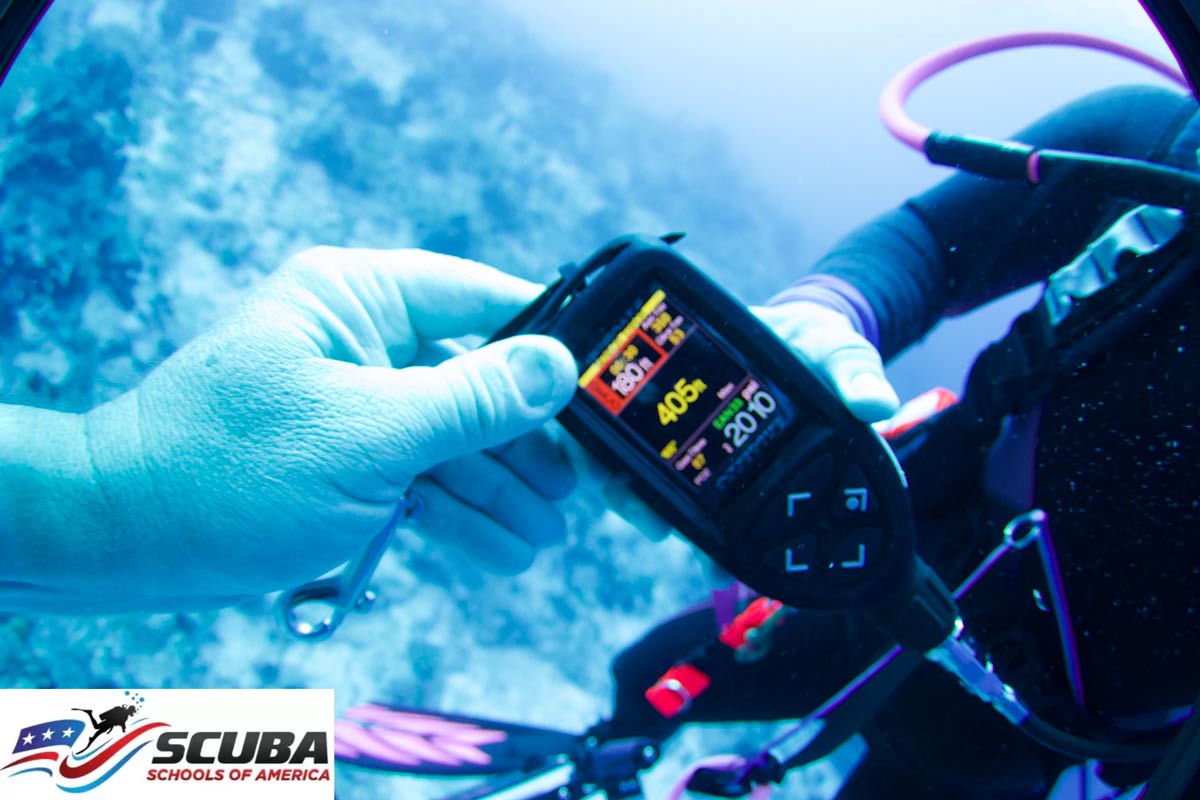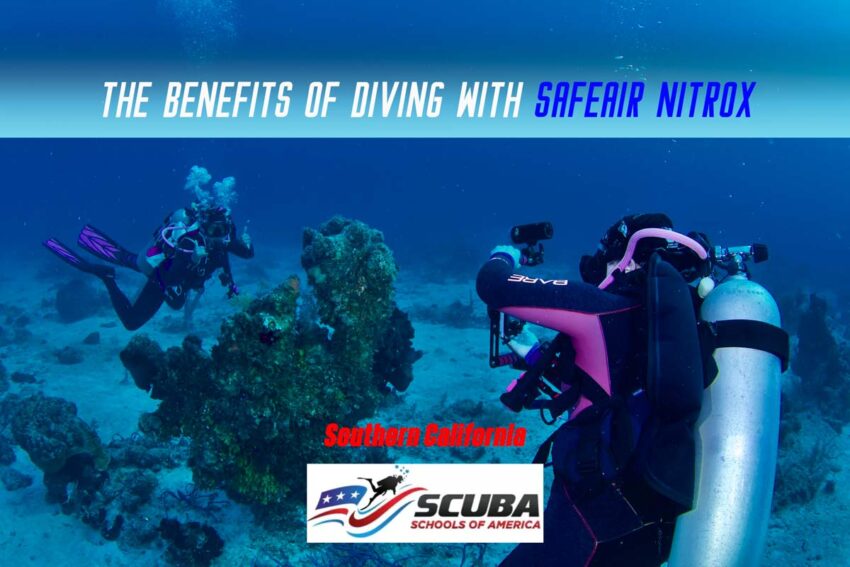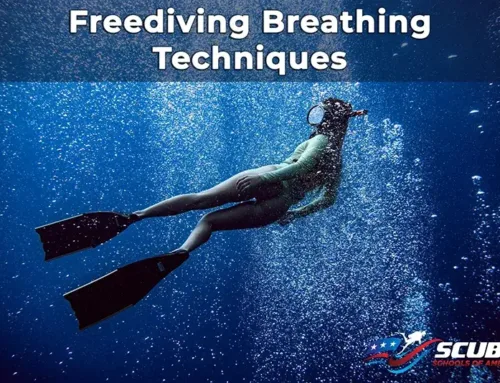What do those scuba tanks with yellow-green labels mean? These tanks were available only for cutting-edge technical divers a few years ago. Today, the Enriched Air Diver course is one of the most highly sought.
If you do not yet know the difference between air and enriched air, you should definitely broaden your knowledge. Diving with Nitrox (or enriched air) is something that every diver aspires to do. The good news is that anyone can choose to dive with nitrox and see the many benefits it has to offer. If this is the first time you hear about diving on nitrox, you may think that the certification is hard to get. But the fact is that it is much easier to get the certification than you think. To find out more about why diving with enriched air is so important, keep reading.
So, What is Nitrox?
The air inside a scuba tank is a mixture of two gasses: oxygen and nitrogen. In most tanks that you see or use, the percentage of oxygen and nitrogen gasses are 21% and 79% respectively. This mixture is called AIR, by default. If the amount of oxygen in the mixture is over 21%, the air is known as enriched air. Enriched gases can go from 21% oxygen to 50% oxygen. Common mixtures are 32% oxygen, 36% oxygen, and 50% oxygen. Our SafeAir Nitrox is oxygen-enriched air with oxygen concentrations of 22%-50% meeting specific gas purity standards. Anything else is dirty nitrox!
One other point to make is that Scuba Schools of America adheres to ANDI, American Nitrox International’s standards of Oxygen Compatible Air. This means that the AIR mixture that we start out with is the cleanest, purest possible air you can have. No hydrocarbons, oils, or water of any kind.
If a scuba tank has enriched air, the label of the cylinder clearly mentions the % of oxygen and nitrogen it contains. We never trust the label. We must always analyze the mixture and confirm the mix of the gas blender before using the gas.
Key Benefits Diving on Nitrox Offers
Knowing the benefits that driving with nitrox brings will certainly pique your interest to acquire the nitrox certification. Given below are some of the key benefits that highlight the importance of nitrox scuba.
Increased Safety
Nitrogen absorption creates problems for divers. When the body absorbs nitrogen and the gas dissolves in the blood, it forms bubbles as the high pressure reduces. This sickness is termed decompression sickness (DCS). But when you dive on nitrox, the chances of developing DCS reduce to a great extent, thus providing you with a great deal of safety while diving. The reduction is due to less nitrogen in the breathing mixture.
Extend Dive Time

Enriched air or recreational nitrox contains a higher level of oxygen and a lower level of nitrogen. Diving with this mixture enables the diver to absorb less amount of nitrogen. The lower percentage of nitrogen dissolved in the blood means you will reduce the amount of nitrogen you are being exposed to. This, in turn, allows the diver to extend their dive time and explore marine life for a greater length of time due to longer Decompression Limits.
Shorter Surface Intervals
Since the diver absorbs less amount of nitrogen when using enriched air, it allows him or her to off-gas with less nitrogen. As a result of this, the surface intervals of the diver get shortened because the diver has less absorbed nitrogen in the body.
Longer Bottomtime on Repetitive Dives
Among other benefits that diving with nitrox offers, one key benefit is that it proves to be highly suited for repetitive dives. If you plan to go on multiple dives in a day, you should certainly dive with enriched air. This is because the diver absorbs less amount of nitrogen than they do with regular air which gives the diver more available time. Another way to get longer bottom times is to promote accelerated off-gassing by using a small pony tank on the ascent with a 50/50 mixture of oxygen and nitrogen. This will allow the diver to off-gas at over a 30% off-gassing capability.
Reduced Fatigue
The divers experienced a clear difference between diving with regular air fills and diving with nitrox or enriched air fills. Divers using nitrox have reported that they feel less exhaustion during the activity. Again, reduced fatigue is a result of less nitrogen absorbed by the diver. This reduced fatigue is primarily due to less stress from worrying about shortened bottom times. The diver is less likely to stress out about running out of time.
How to Get SafeAir Nitrox Scuba Certification
By now, you might have made up your mind to dive with nitrox on your next vacation. But are you prepared to do nitrox scuba? In order to dive with enriched air, you will need to get nitrox certified.
A lot of divers are showing interest in nitrox scuba. It is the multiple benefits of nitrox diving that attract them. You should be happy to know that it is not difficult to obtain nitrox scuba certification. Now, you can complete the course from the comfort of your own home or head straight to the Scuba Schools of America & Swim in Montclair, CA. At our dive center, you will be able to get all the information and expert help that you need to get certified in nitrox scuba diving.
You can get nitrox scuba training in just a couple of hours or just one afternoon. All you need to do is go through the course content and then learn the skill with the help of an experienced scuba instructor. Like a few years ago, you don’t have to use multiple dive tables to get the certification. You can do all of your Active Learning Sessions via Zoom with live meetings with our instructors.
Availability and Cost
When it comes to nitrox scuba, you may wonder where exactly you will get the mixture. If you think all dive shops provide enriched air, you should be well-informed that this is not true. You will not be able to get nitrox scuba tanks. Only selected dive shops provide enriched airfill service. If you are in California, you should head straight to the Scuba Schools or America to get nitrox.
Nitrox is not much more expensive than regular air. Most fills are $12. Apart from the cost difference, you also need to know that nitrox or enriched air cannot be filled in the regular cylinder. You will need an Oxygen-cleaned cylinder for nitrox fills.
Depth Limitations for Nitrox Scuba

Nitrox scuba is different from regular air scuba in multiple ways. Even when it comes to how deep you can dive on nitrox, there are limitations. Actually, it depends on the blend of the oxygen-nitrogen mixture. While being trained for nitrox scuba, the instructor will equip you with all essential information. You will know the Maximum Operating Depth of the gas mixture when you pick your cylinder up from the Gas Blender.
You need to be educated on all aspects of nitrox scuba before you actually head out for deep underwater diving.
Additional Benefits of Getting SafeAir Nitrox Certification
Nitrox scuba training offers many more benefits than you can imagine. While you work to obtain the certification, you will have the opportunity to broaden your understanding of diving physiology. We actually train our Open Water Level 1 Diver to dive on SafeAir Nitrox from the very beginning.
Nitrox scuba diving certification is required for aspirants who want to get enrolled in technical diving courses. In short, learning to scuba dive on nitrox will bring you one step closer to becoming a master diver.
Talk to a SafeAir Nitrox Scuba Instructor
If you want to enjoy and experience all the benefits that nitrox scuba has to offer, you should head straight to the Scuba Schools of America and Swim in Montclair, CA. At our dive shop, you will have the opportunity to learn and complete nitrox scuba under the expert guidance of highly experienced nitrox scuba instructors. Our instructors have successfully trained a large number of divers to dive with nitrox for a safe and enriching diving experience. In addition to SafeAir nitrox scuba certification, our diving school also offers Open Water Diver Classes, Claremont College Scuba Program, SSI Specialty Programs, Extended Range Training, Scuba Rangers, Universal Studios Technical Services Diver, etc.
For your free consultation on nitrox scuba, reach out to one of our experts via a phone call or write us an email using the contact form.






